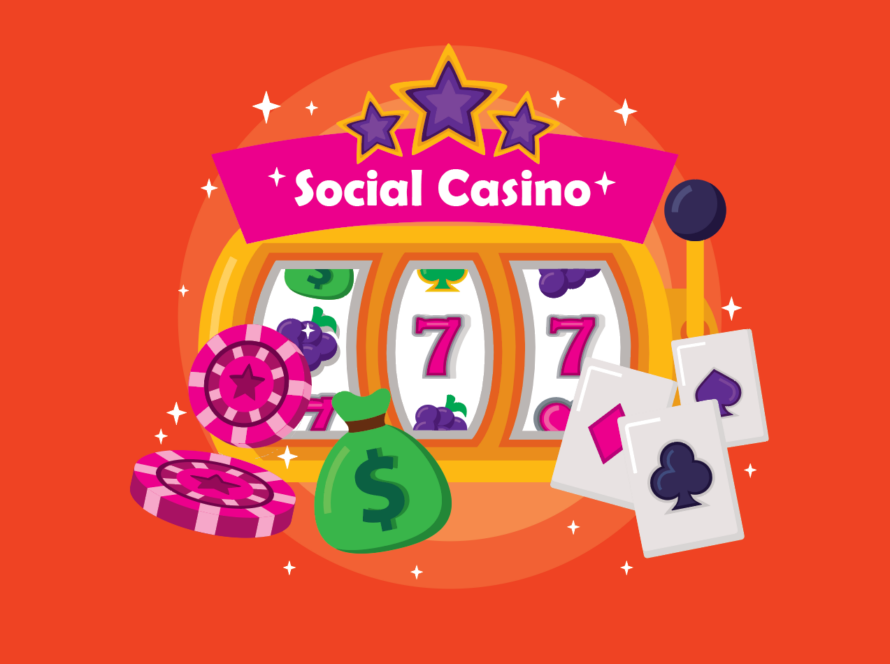In the ever-evolving world of social casino gaming, designing a slot game that keeps players spinning requires more than just flashy graphics and catchy themes. As a game designer consultant, I’ve spent years delving into the mechanics that drive player engagement. Creating a successful slot game is an intricate dance between game design, flow, and—perhaps most critically—the game economy. Let’s explore how these elements come together to craft an experience that not only hooks players but also keeps them coming back for more.
The Heart of Slot Game Design: Immersive Flow
Every great slot game has an underlying rhythm—a “flow” that draws players into a state of immersive play. This flow hinges on several key factors:
- Visual and Audio Design: A slot game must be a feast for the senses. Vivid animations, attention-grabbing symbols, and soundtracks that amplify the excitement are essential. That said, it’s not just about being flashy; it’s about creating a cohesive, thematic experience. Think of it like setting a stage for a play. Every spin is a new act in the story.
- Pacing: The speed of each spin, the frequency of wins (small, medium, and large), and the timing of bonus features all contribute to a game’s pacing. A well-paced slot game keeps players in the “Goldilocks zone”—not too fast, not too slow, but just right to sustain excitement. The sweet spot is finding a rhythm that makes players feel like something big is always around the corner while still offering enough smaller wins to keep them engaged. “The key to a slot’s flow state is balance,” says our team at LLG. “You want players to feel like they’re on the edge of something exciting with every spin. It’s about creating just enough anticipation to keep them in the zone without overwhelming or underwhelming them.”
- Feature Variety: Basic spinning is fun, but adding layers like free spins, mini-games, and progressive jackpots gives players multiple avenues for thrill. These features need to be integrated seamlessly into the game flow, so they enhance the overall experience rather than disrupt it.

The Secret Sauce: Slot Game Economy Balance
Now, here’s where things get interesting (and a bit technical). If the flow is the heart, the economy is the lifeblood of a slot game. The in-game economy determines how players win, lose, and earn rewards, and it’s the key to retention.
Understanding Return to Player (RTP)
The Return to Player (RTP) is a critical concept in slot game design. In essence, RTP is the percentage of the total amount bet that a game returns to players over time. For social casino games, the goal is to keep the RTP high enough to maintain excitement but balanced enough to encourage continued play.
- Pro Tip: A social slot game typically has an RTP of 92-96%. Higher RTPs make players feel like they’re winning frequently, creating a sense of progress, while lower RTPs can make the game feel “tighter,” which might appeal to players who enjoy the challenge.
Payout Frequency and Size
It’s not just how much players can win; it’s also about how often. Slot games are all about creating a journey, and small, frequent wins are essential for building that sense of momentum.
- Small Wins: These are the backbone of player engagement. Think of them as little nudges that say, “Keep going—you’re on the right track!” They maintain the excitement and justify the next spin.
- Medium Wins: These provide spikes in engagement. They’re unexpected enough to make the player feel lucky, but not so rare that they seem impossible to achieve. The trick is to sprinkle them in just enough to keep players thinking, “I could hit it again.”
- Big Wins and Jackpots: These are the ultimate lure. While infrequent, big wins need to be spectacular. Even if a player doesn’t win a jackpot themselves, seeing it happen to others adds a layer of excitement and keeps them dreaming of their own “big hit.”
Crafting a Balanced Economy: Coins, Bet Sizes, and Rewards
The in-game economy also revolves around the player’s coin balance and bet sizes. This is where game design becomes a delicate balancing act.
- Starting Balance: A generous starting balance gives new players a sense of freedom to explore the game. But it also needs to be finite enough to introduce a touch of challenge. Players should feel like they need to manage their bets to maximize their playtime.
- Bet Sizes: Offering a range of bet sizes lets players decide their level of risk. The key is to make lower bets feel rewarding while still leaving room for higher bets to offer enticing potential payouts. A well-balanced game encourages players to adjust their bets dynamically, raising them when they’re feeling lucky.
- Virtual Currency Flow: Winning virtual coins and receiving bonuses need to be structured to keep players engaged without feeling overwhelmed or underwhelmed. Daily bonuses, level-up rewards, and promotions can replenish players’ balances, giving them reasons to return and play more.
Bonus Features: Adding Depth to the Economy
Let’s talk bonus features—free spins, mini-games, jackpots—they’re not just for show. They’re essential components of the game economy that provide depth and excitement. However, they must be carefully balanced:
- Free Spins: These should feel valuable and exciting but not too easy to obtain. Offering free spins frequently keeps the game lively, but their payout structure needs to be controlled to avoid excessive coin inflation.
- Jackpots: Progressive jackpots are a player magnet. Watching that jackpot meter climb creates a sense of shared excitement. However, the game design must ensure that even small contributions to the jackpot pool don’t drain the game’s economy.
The Endgame: Retention and Engagement
A well-balanced game economy is critical for player retention. If a player’s coin balance depletes too quickly, they may leave out of frustration. If they win too often or too easily, the challenge evaporates, and so does the excitement. The art of game design lies in maintaining a sense of possibility—players should feel like the next spin could be the one that changes their luck.
Retention Strategies for the Long Haul
- Daily Bonuses: Providing daily bonuses gives players a reason to return. By adjusting the size of these bonuses, you can control the game economy and ensure players maintain enough coins to keep playing.
- Level-Up Rewards: Rewarding players as they level up encourages long-term engagement. This progression system not only creates goals but also provides a sense of achievement and mastery.
- Special Events: Seasonal or timed events with special rewards can shake up the game’s economy in a controlled way, providing fresh excitement and keeping players engaged over the long term.
Creating the Perfect Flow
Designing a slot game is a mix of art, psychology, and economics. From the pacing and visual design to the intricacies of the game economy, every element plays a role in creating that perfect flow that keeps players spinning. The challenge is to strike a balance where the wins feel meaningful, the losses feel motivating, and the economy is sustainable for player retention. When done right, it transforms a simple game into an engaging, enduring experience that players will keep coming back to.
At LLG, these are exactly the factors we consider as a team when designing games for our partners. We understand the delicate balancing act between player engagement, economy management, and long-term retention. Our team of experienced designers and consultants works with you to craft games that resonate with your target audience and keep them coming back for more. If you’re looking to launch or optimize your social casino games, we’ve got you covered—from game flow to economy design, ensuring every spin is part of an unforgettable journey.
Ready to create a game that players will love? Let’s build it together!


